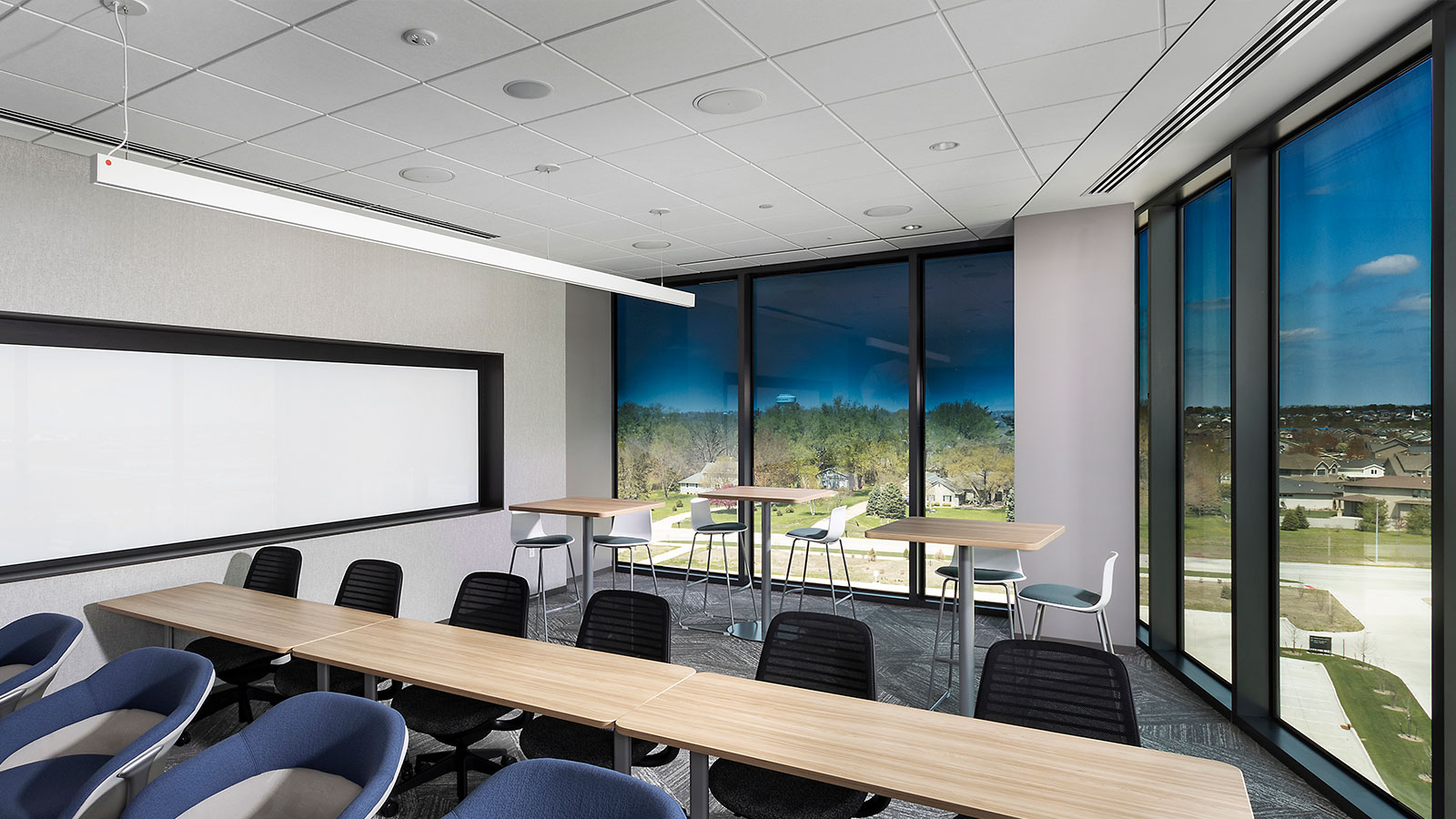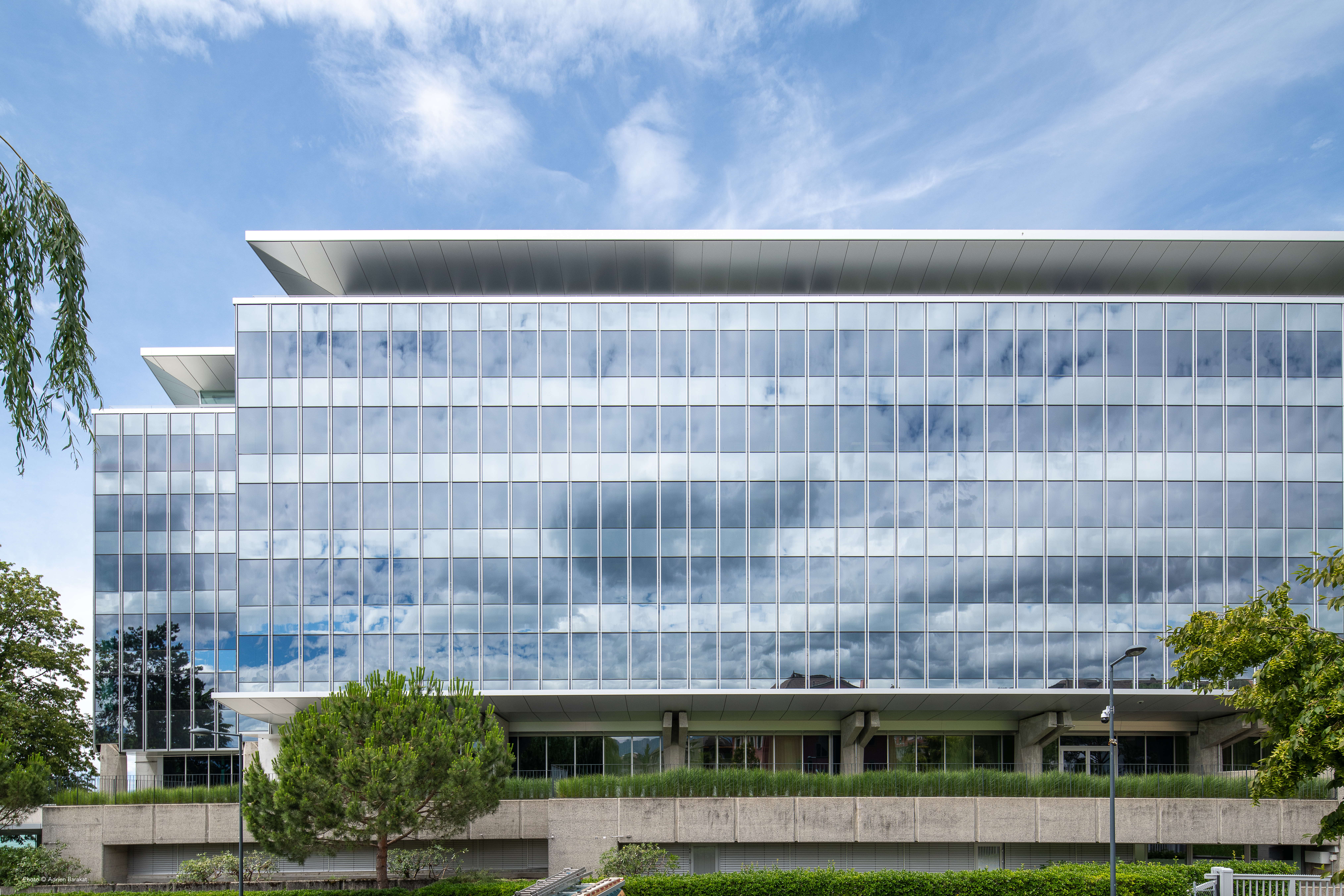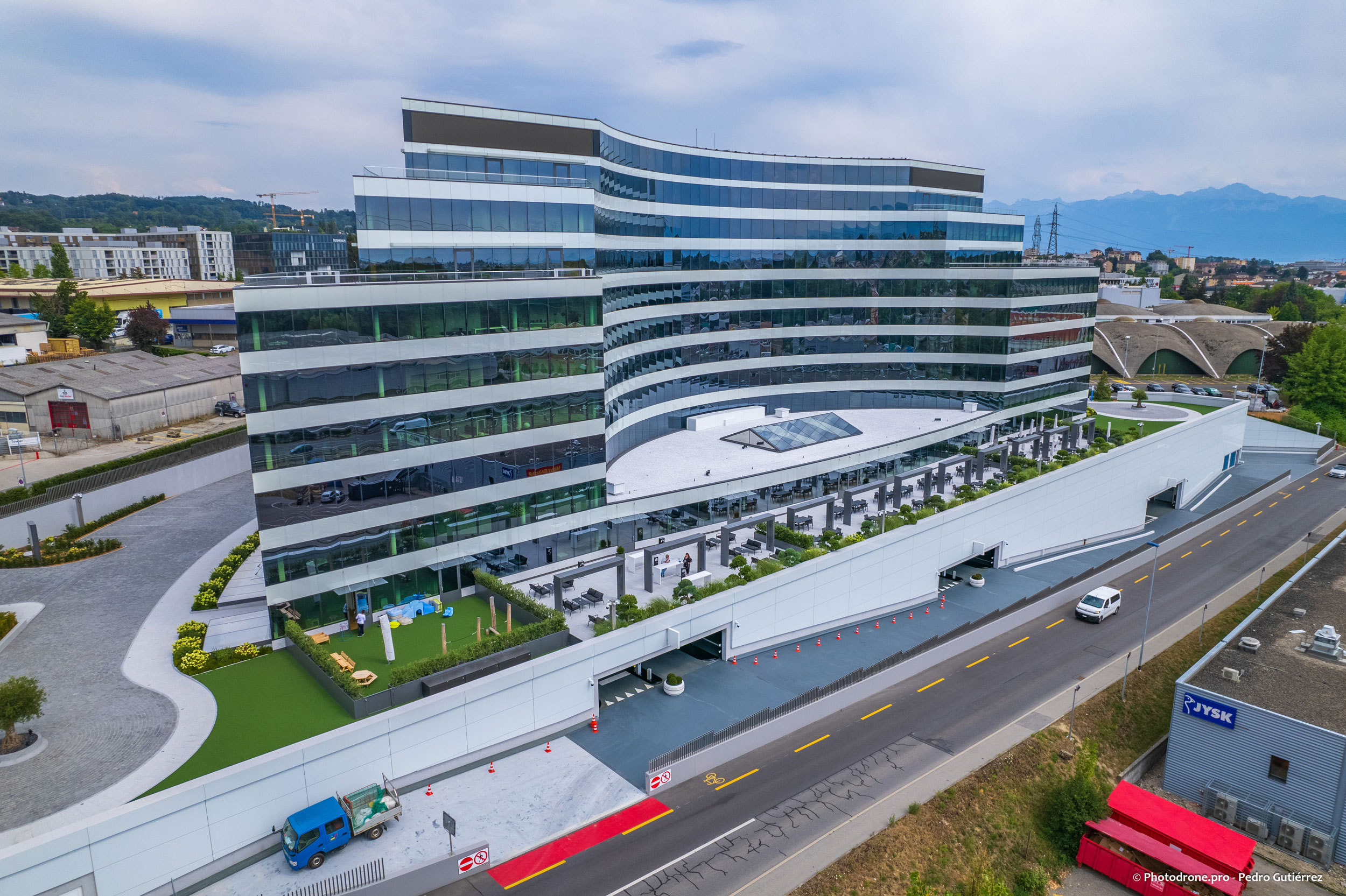What Architects Love About Today's SageGlass
Over the past few years, the landscape of dynamic glass has changed significantly. While the design community appreciated optimal daylighting and energy savings while reducing the need for blinds and shades, there were a couple key barriers to widespread adoption, namely aesthetics and examples of large projects.
With recent innovations and changes in the market, here's what's new with smart windows:
1. Less blue, more daylight
While earlier generations of smart windows appeared "too blue" from the inside, SageGlass Harmony®, is the only electrochromic solution that can tint on a gradient, in addition to whole-pane tinting. By tinting just a portion of the glass, Harmony provides targeted glare control while maximizing daylight and preserving interior color rendition in the space.
In fact, we've found that gradient tinting alone can control glare 60-70% of the time.

2. Enhanced exterior aesthetics
When tinted, earlier generations of dynamic glass appeared dark from the outside, but we know that isn't suited for every application. The introduction of Saint-Gobain's Bright Silver coating offers architects and designers a more vibrant and reflective coating to boost curb appeal.

3. Deployment at scale
Dynamic glass isn't just a niche technology for boutique projects. SageGlass Harmony with Bright Silver has been installed worldwide in large, high-profile installations such as:
- Google campus (200,000 sq. ft.)
- IQHQ Research and Development District (150,000 sq. ft.)
- Millennium smart office building (50,000 sq. ft.)

SageGlass is penetrating the market at a much larger scale than a few years ago. We're increasingly working with clients who see the rapidly approaching future of building design, focused on wellness, energy consumption reduction, and sustainability.
Between the macrotrends that are reshaping the built environment, and market specifics due to technology advancements, dynamic glass is quickly becoming a must-have. With façades representing a 50-year decision for designers and owners, the question is no longer, “Why choose dynamic glass?” It’s, “Why not?”
For more information, please contact us.